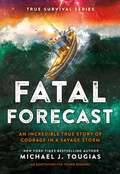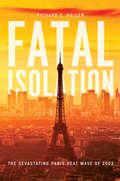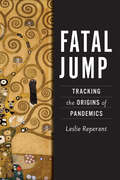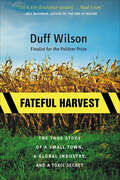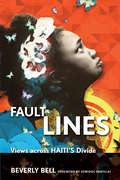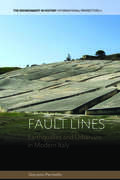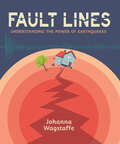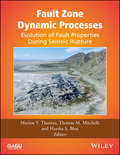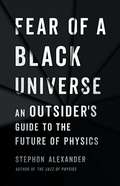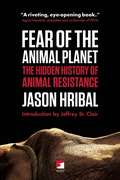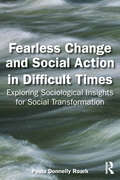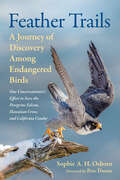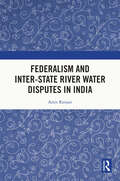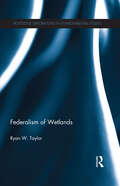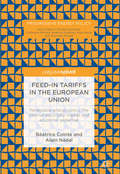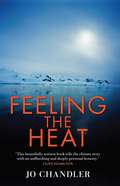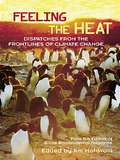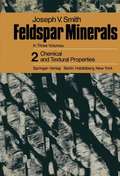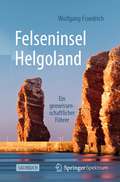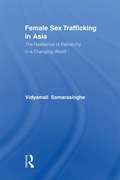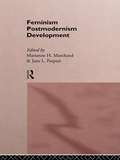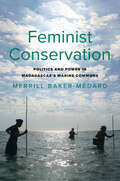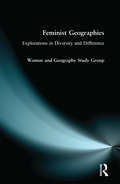- Table View
- List View
Fatal Forecast: An Incredible True Story of Courage In a Savage Storm (True Survival Series #2)
by Michael J. TougiasAs harrowing as The Perfect Storm—but with a miraculous ending—Fatal Forecast is one of the greatest survival stories ever told—now available as a young readers edition.★ "Plunges into the action with pulse-pounding panache…. Readers will be rooting for all these courageous men in this thrilling, edge-of-your-seat survival tale." —Booklist, starred review On the morning of November 21, 1980, two small boats set out from Cape Cod for Georges Bank, a prosperous fishing ground one hundred miles out to sea. The National Weather Service had forecast typical fall weather, and the young crew aboard the Sea Fever and the Fair Wind had no reason to expect that this trip would be any different from the dozens they&’d made earlier in the season. What they didn&’t know was that the only weather buoy in the area was malfunctioning as the National Weather Service had failed to reveal this critical data. As the two boats headed out, a colossal storm was brewing, a furious maelstrom that would batter the boats with sixty-foot waves and hurricane-force winds. This true story of catastrophe and survival at sea is a vivid moment-by-moment account of seventy-two hours in the lives of eight men. Most amazing is the story of Ernie Hazard, who spent more than fifty terrifying hours in—and out of—a tiny life raft, careening in the monstrous waves. Gripping and heart-pounding, this page-turning young readers edition is an unforgettable story about the collision of two spectacular forces: the brutality of nature and the human will to survive. An adaptation for young readers of Fatal Forecast: An Incredible True Tale of Disaster and Survival at Sea."Middle and early high school readers who love a gripping adventure or survival story will tear through this one. Highly recommended." —School Library Journal
Fatal Isolation: The Devastating Paris Heat Wave of 2003
by Richard C. KellerIn a cemetery on the southern outskirts of Paris lie the bodies of nearly a hundred of what some have called the first casualties of global climate change. They were the so-called abandoned victims of the worst natural disaster in French history, the devastating heat wave that struck in August 2003, leaving 15,000 dead. They died alone in Paris and its suburbs, and were then buried at public expense, their bodies unclaimed. They died, and to a great extent lived, unnoticed by their neighbors--their bodies undiscovered in some cases until weeks after their deaths. Fatal Isolation tells the stories of these victims and the catastrophe that took their lives. It explores the multiple narratives of disaster--the official story of the crisis and its aftermath, as presented by the media and the state; the life stories of the individual victims, which both illuminate and challenge the ways we typically perceive natural disasters; and the scientific understandings of disaster and its management. Fatal Isolation is both a social history of risk and vulnerability in the urban landscape and a story of how a city copes with emerging threats and sudden, dramatic change.
Fatal Jump: Tracking the Origins of Pandemics
by Leslie ReperantExploring the fateful chains of events that gave rise to humanity's infectious diseases and pandemics.Why do global pandemics materialize? To address this question, we must delve into the world of pathogens that transcend their original host species and jump into new ones. Most pathogens fail to initiate infection or spread in the population when they jump. Only a few sustain onward chains of transmission, and even fewer sustain these indefinitely. Yet the rare pathogens that do make the leap have caused many of humanity's most dangerous infectious diseases.In Fatal Jump: Tracking the Origins of Pandemics, veterinary disease ecologist Dr. Leslie Reperant investigates mysteries such as how African-originated monkeypox left its home continent, why COVID-19 could threaten measles control, and how pigs' fondness for mangoes enabled the deadly Nipah virus to spread. She shares behind-the-scenes insights into hugely destructive pathogens carried by rats, bats, ticks, and mosquitoes, as well as lesser-known vectors such as prairie dogs and camels. Drawing from the latest research, she discusses whether we can predict these deadly jumps before they happen and what factors—including environmental change, population dynamics, and molecular evolution—enable a zoonotic disease to reach full pandemic status. Rich with recent scientific discoveries and emerging theories, this book spans a diverse range of disciplines, weaving their insights into a holistic view of infectious disease.With new pathogens emerging at an alarming pace, Fatal Jump reorients our perspective on pandemics from a human-centered standpoint to the bigger picture. We will understand what actions are necessary to control emergence only by recognizing the increasingly global nature of human society and the connections between the planet's environmental health and our own health.
Fateful Harvest: The True Story of a Small Town, a Global Industry, and a Toxic Secret
by Duff WilsonI see soil in a new light, and I wonder about my own lawn and garden. What have I sprinkled on my backyard? Is somebody using my home, my food, to recycle toxic waste? It seems unbelievable, outlandish -- but what if it's true?A riveting expose, Fateful Harvest tells the story of Patty Martin -- the mayor of a small Washington town called Quincy -- who discovers American industries are dumping toxic waste into farmers' fields and home gardens by labeling it "fertilizer." She becomes outraged at the failed crops, sick horses, and rare diseases in her town, as well as the threats to her children's health. Yet, when she blows the whistle on a nationwide problem, Patty Martin is nearly run out of town.Duff Wilson, whose Seattle Times series on this story was a finalist for the Pulitzer Prize, provides the definitive account of a new and alarming environmental scandal. Fateful Harvest is a gripping study of corruption and courage, of recklessness and reckoning. It is a story that speaks to the greatest fears -- and ultimate hope -- in us all.
Fathoming the Ocean: The Discovery and Exploration of the Deep Sea
by Helen M Rozwadowski&“[An] amiable, in-depth examination of the most critical era for the development of modern oceanography&” (Publishers Weekly). In a history at once scientific and cultural, Helen Rozwadowski shows us how the Western imagination awoke to the ocean's possibilities?in maritime novels, in the popular hobby of marine biology, in the youthful sport of yachting, and in the laying of a trans-Atlantic telegraph cable. The ocean emerged as important new territory, and scientific interests intersected with those of merchant-industrialists and politicians. Rozwadowski documents the popular crazes that coincided with these interests?from children's sailor suits to the home aquarium and the surge in ocean travel. She describes how, beginning in the 1860s, oceanography moved from yachts onto the decks of oceangoing vessels, and landlubber naturalists found themselves navigating the routines of a working ship's physical and social structures.Fathoming the Ocean offers a rare and engaging look into our fascination with the deep sea and into the origins of oceanography?origins still visible in a science that focuses the efforts of physicists, chemists, geologists, biologists, and engineers on the common enterprise of understanding a vast, three-dimensional, alien space. &“Rozwadowski greatly expands our own understanding, all while telling a story that is original, wide-ranging, and illuminating.&” —Margaret Deacon, Southampton Oceanography Centre, author of Science and the Sea: The Origins of Oceanography &“Required reading for anyone wanting to understand how the oceans have come to play the role that they do in Western knowledge.&” —Eric L. Mills, Dalhousie University and author of Biological Oceanography: An Early History, 1870-1960 &“Chronicles the birth of deep-sea oceanography, from early observations by Benjamin Franklin to the voyage of HMS Challenger in the 1870s. [Rozwadowski] weaves a rich narrative from the world of renowned as well as lesser-known oceanographers.&” —Nature
Fault Lines
by Beverly BellBeverly Bell, an activist and award-winning writer, has dedicated her life to working for democracy, women's rights, and economic justice in Haiti and elsewhere. Since the 7. 0 magnitude earthquake of January 12, 2010, that struck the island nation, killing more than a quarter-million people and leaving another two million Haitians homeless, Bell has spent much of her time in Haiti. Her new book, Fault Lines, is a searing account of the first year after the earthquake. Bell explores how strong communities and an age-old gift culture have helped Haitians survive in the wake of an unimaginable disaster, one that only compounded the preexisting social and economic distress of their society. The book examines the history that caused such astronomical destruction. It also draws in theories of resistance and social movements to scrutinize grassroots organizing for a more just and equitable country. Fault Lines offers rich perspectives rarely seen outside Haiti. Readers accompany the author through displaced persons camps, shantytowns, and rural villages, where they get a view that defies the stereotype of Haiti as a lost nation of victims. Street journals impart the author's intimate knowledge of the country, which spans thirty-five years. Fault Lines also combines excerpts of more than one hundred interviews with Haitians, historical and political analysis, and investigative journalism. Fault Lines includes twelve photos from the year following the 2010 earthquake. Bell also investigates and critiques U. S. foreign policy, emergency aid, standard development approaches, the role of nongovernmental organizations, and disaster capitalism. Woven through the text are comparisons to the crisis and cultural resistance in Bell's home city of New Orleans, when the levees broke in the wake of Hurricane Katrina. Ultimately a tale of hope, Fault Lines will give readers a new understanding of daily life, structural challenges, and collective dreams in one of the world's most complex countries.
Fault Lines: Earthquakes and Urbanism in Modern Italy (Environment in History: International Perspectives #6)
by Giacomo ParrinelloEarth’s fractured geology is visible in its fault lines. It is along these lines that earthquakes occur, sometimes with disastrous effects. These disturbances can significantly influence urban development, as seen in the aftermath of two earthquakes in Messina, Italy, in 1908 and in the Belice Valley, Sicily, in 1968. Following the history of these places before and after their destruction, this book explores plans and developments that preceded the disasters and the urbanism that emerged from the ruins. These stories explore fault lines between “rural” and “urban,” “backwardness” and “development,” and “before” and “after,” shedding light on the role of environmental forces in the history of human habitats.
Fault Lines: Understanding the Power of Earthquakes
by Johanna WagstaffeEarthquakes are a terrifying yet fascinating force of nature. Seismologist Johanna Wagstaffe takes you through her own journey of understanding the earth beneath our feet. Along the way you’ll learn the science behind what makes the earth rumble and hear from kids around the world who have experienced the wonder, and terror, of an earthquake.
Fault Zone Dynamic Processes: Evolution of Fault Properties During Seismic Rupture
by Harsha S. Bhat Marion Y. Thomas Thomas M. MitchellWhy do earthquakes happen? What properties control the dynamic rupture and what are the processes at play? Chapters in the present volume capture the current state of the art by displaying an overview of the existing knowledge on the physics of dynamic faulting and promote multidisciplinary contributions on the observational and experimental fault fabric and mechanics, the evolution of fault zone physical and chemical properties, dynamic rupture processes and physically, and observationally, consistent numerical modeling of fault zone during seismic rupture. This volume examines questions such as: What are the dynamics processes recorded in fault gouge? What can we learn on rupture dynamic from laboratory experiments? How on-fault and off-fault properties affect seismic ruptures? How do they evolve trough time? Insights from physically, and observationally, consistent numerical modeling Fault Zone Dynamic Processes: Evolution of Fault Properties During Seismic Rupture is a valuable contribution for Earth’s scientists, researchers and students interested in the earthquakes processes and properties of on-fault and off-fault zones. Its multidisciplinary content is relevant to a broad audience: structural geologist, experimentalists, rocks mechanicians, seismologist, geophysicists and modelers.
Fear of a Black Universe: An Outsider's Guide to the Future of Physics
by Stephon AlexanderIn this important guide to science and society, a cosmologist argues that physics must embrace the excluded, listen to the unheard, and be unafraid of being wrong. Years ago, cosmologist Stephon Alexander received life-changing advice: to discover real physics, he needed to stop memorizing and start taking risks. In Fear of a Black Universe, Alexander shows that great physics requires us to think outside the mainstream -- to improvise and rely on intuition. His approach leads him to three principles that shape all theories of the universe: the principle of invariance, the quantum principle, and the principle of emergence. Alexander uses them to explore some of physics' greatest mysteries, from what happened before the big bang to how the universe makes consciousness possible. Drawing on his experience as a Black physicist, he makes a powerful case for diversifying our scientific communities. Compelling and empowering, Fear of a Black Universe offers remarkable insight into the art of physics.
Fear of the Animal Planet
by Jason Hribal Jeffery St. ClairTaking the reader deep inside of the circus, the zoo, and similar operations, Fear of the Animal Planet provides a window into animal behavior: chimpanzees escape, elephants attack, orcas demand more food, and tigers refuse to perform. Indeed, these animals are rebelling with intent and purpose. They become true heroes and our understanding of them will never be the same.
Fearless Change and Social Action in Difficult Times: Exploring Sociological Insights for Social Transformation
by Paula Donnelly RoarkOur divided politics, unable to solve the challenges we face concerning society’s hierarchies of injustice, poverty, endless war, and climate change, are now backtracking to even more division. But the reality goes far deeper than the simple politics of left and right. For true change, we need something more profound: a culture shift, a collective change of consciousness.Fearless Change and Social Action in Difficult Times argues that culture shifts don’t just happen, they require a strong focus on social and cultural human connection which neither political nor economic power can provide alone. It is only deep participation and social integrative power which have the capacity to create these necessary cultural and societal transformations. Developing awareness in participatory groups of thought-worlds which remain out-of-sight but give cover to the implicit rules of culture and society is the first step to creating shared awareness of constructs and negative thought-worlds that subconsciously support inequality. Consciously putting aside those that are negative allows for the emergence of new positive realities and social movements. Thus, the real revolution is of the mind. It does take courage, but this is the process by which better futures are created.Offering significant contributions to sociology and social theory, this book promotes an understanding that societal change is rooted in social power and cultural shifts. Inclusive in its presentation, students, professors, NGO professionals, volunteers, activists, and interested observers will find this book of high interest.
Feather Trails: A Journey of Discovery Among Endangered Birds
by Sophie A. OsbornNamed ABA Birding Book Club&’s Best Book of the Year&“[This book] deserves to be read widely, because it is only in coming to understand these animals, suggests Osborn, that we can choose to love and help them.&”—New ScientistThe story of one woman&’s remarkable work with a trio of charismatic, endangered bird species—and her discoveries about the devastating threats that imperil them.In Feather Trails, wildlife biologist and birder Sophie A. H. Osborn reveals how the harmful environmental choices we&’ve made—including pesticide use, the introduction of invasive species, lead poisoning, and habitat destruction—have decimated Peregrine Falcons, Hawaiian Crows, and California Condors.In the Rocky Mountains, the cloud forests of Hawai&’i, and the Grand Canyon, Sophie and her colleagues work day-to-day to try to reintroduce these birds to the wild, even when it seems that the odds are steeply stacked against their survival.With humor and suspense, Feather Trails introduces us to the fascinating behaviors and unique personalities of Sophie&’s avian charges and shows that what endangers them ultimately threatens all life on our planet.More than a deeply researched environmental investigation, Feather Trails is also a personal journey and human story, in which Sophie overcomes her own obstacles—among them heat exhaustion, poachers, rattlesnakes, and chauvinism.Ultimately, Feather Trails is an inspiring, poignant narrative about endangered birds and how our choices can help to ensure a future not only for the rarest species, but for us too.&“An intimate look at the wonder and effort needed for working with endangered species in the wild. [Osborn&’s] matter-of-fact writing style and wry humor make the reader part of the action.&”—Booklist (starred review)
Federalism and Inter-State River Water Disputes in India
by Amit RanjanThis book examines the Union-State and inter-State relations concerning water issues in India. It analyses the federal structure in India and looks at its effectiveness in addressing the inter-state river water disputes in the country through three cases: the Cauvery, Krishna and Mahadayi Rivers water dispute. It probes into the physical, political, legal and constitutional measures taken by the Union government and the states to deal with the inter-State and Union-State tussles over inter-State river waters. The author studies the debate over centralisation and decentralisation of water resources, as well as the inter-state river water disputes that have aroused feelings of sub-nationalism in many regions of India. Finally, this book also examines socio-political tensions over multipurpose water projects and other supply-side infrastructures, and their efficacy in addressing India’s increasing water problems. This book will interest researchers and students of Environmental Politics, Political Science, Public Policy, Environmental Geography, Indian Politics, South Asian Studies, Environmental Economics, Environmental Policy, River Management, and Resource politics.
Federalism of Wetlands: Federalism Of Wetlands (Routledge Explorations in Environmental Studies)
by Ryan W. TaylorThis book investigates the consequences of redundant state and federal environmental regulations in the United States. Drawing on the most exhaustive statistical analysis of US federal wetland permits ever constructed, the book uncovers the disjointed world of wetland regulation. The author starts by examining the socioeconomic and environmental factors driving individuals to apply for environmental regulatory permits and the regional inconsistencies encountered in federal environmental regulatory program performance. The book goes on to demonstrate that states have more power in federal relationships than scholars often believe and that individual state policies are important even in a time of strong federal governance. Evidence shows that such intergovernmental redundancy serves to increase overall regulatory program effectiveness. This book breaks new ground in the subjects of federalism and environmental regulation by rejecting the traditional approach of picking winners and losers in favour of a nuanced demonstration of how redundancy and collaboration between different levels of governance can make for more effective governmental programs. The book is also innovative in its use of the perspectives of regulated citizens not as a point of judgment, but as a means of introducing a constructive new way of thinking about political and administrative boundaries within a federalist system of governance. The book provides relevant context to wider political debates about excessive and duplicative regulatory oversight and will be of interest to Environmental Policy students and administrators.
Feed-in tariffs in the European Union
by Alain Nadaï Béatrice CointeThis book is a sociological account of the historical trajectory of feed-in tariffs (FITs) as an instrument for the promotion of renewable energy in Europe. Chapters analyse the emergence and transformations of feed-in tariffs as part of the policy arsenal developed to encourage the creation of markets for RES-E in Europe. The authors explore evolving conceptions of renewable energy policy at the intersection between environmental objectives, technological change and the ambition to liberalise the internal electricity market. They draw conclusions on the relationships between markets and policy-making as it is instituted in the European Union, and on the interplay between the implementation of a European vision on energy and national politics. Distinctive in both its approach and its methods the books aim is not to discuss the design of feed-in tariffs and their evolution, nor is it to assess their efficiency or fairness. Instead, the authors seek to understand what makes feed-in tariffs what they are, and how this has changed over time.
Feel The Wind (Let's-Read-and-Find-Out Science)
by Arthur DorrosHave you ever felt the wind tickle your face or heard it whistle through your window? Did you know that some wind travels faster than a car? <p><p> Air is always moving. We can't see air moving, though we can watch it push clouds across the sky, or shake the leaves of a tree. We call moving air the wind. In this enlarged edition, find out about the wind - what causes it, how it can be used to help us, and how it affects the weather. <p> Arthur Dorros shows you how to make your own weather vane, and in simple terms, with playful illustrations, he explains just what makes the wind that blows all around us.
Feeling The Heat
by Jo ChandlerIn Feeling the Heat, journalist Jo Chandler sets out on a quest that takes her across the Antarctic ice, under the seas and through the tropical rainforests of far north Queensland. Her mission is to explore one of the defining mysteries of our age-climate change. The story Chandler tells is an epic adventure complete with heroes and villains. It's a love story for those with an affection for nature. A reality show like no other. It's also a story of science in its most glorious, pure form. Chandler takes us into wild landscapes in the company of scientists trying to decode climate information that will be critical to the decisions we make for the future of the planet. Written in the vein of Susan Orlean's The Orchid Thief, and by turn lyrical, funny, and achingly sad, Feeling the Heat reveals startling truths about that delicate, confounding organism we call Earth. Winner: 2012 Bragg UNSW Press Prize for Science Writing Shortlisted: 2011 Queensland Premier's Literary Awards Science Writer Award Longlisted: 2012 John Button Prize
Feeling the Heat: Dispatches from the Front Lines of Climate Change
by From the Editors of E/The Environmental MagazineFor an increasing number of people, global warming is not an academic and scientific debate, but a matter of survival. As the planet warms at a rate of four degrees Fahrenheit per century, violent storms are increasing in frequency, icebergs are melting, sea level is rising, species are losing their habitats, and temperature records are being broken. Feeling the Heat consists of chapter-length visits by well-known authors to actual world "hot" spots, where people are already coping day-to-day with the consequences of climactic disruption. The locations for the book were strategically chosen because each represents a separate and important global warming impact, such as rising tides, melting glaciers, evolving ecosystems and air pollution. Feeling the Heat takes global warming out of the realm of armchair speculation and arcane scientific debate, revealing the process of climate change to be ongoing, serious and immediate.
Feldspar Minerals: 2 Chemical and Textural Properties
by J.V. Smith33 14. 3. 5 REE between Plagioclase and Aqueous Fluid 0 Cullers et al. (1973) measured the distribution of REE at 850 C and 750 bars pressure between a natural plagioclase, An , and gaseous water. The rare earths 65 favored the plagioclase by a factor which varies from about 25 for Ce to 10 for Lu. Data were also obtained for forsterite, diopside, enstatite and two rhyolite glasses, on the one hand, and water on the other hand, thereby permitting estimation of the partition coefficients between all pairs of phases. 14. 4 Chemical Substitution in Natural Feldspars 14. 4. 1 Introduction It is quite impracticable to give all the data on chemical substitution in natural feldspars: indeed many of the details are significant only to some particular pegmatite or rock body. As far as possible, emphasis is placed on features of general interest to crystal chemists and to petrologists. Ironically the well established features can be described more easily than the uncertain ones, and unfortunately it is necessary to use valuable space on data of dubious value. The bibliography is fairly complete, but it was impracticable to locate all data, especially those in obscure journals. Each reference is followed by a list of the elements referred to in the paper, thereby permitting a reader to compile a fairly compre hensive set of references on any chosen element. Not all papers are mentioned in the text. The book on Geochemistry and Mineralogy of Rare Elements, etc.
Felseninsel Helgoland: Ein geowissenschaftlicher Führer
by Wolfgang FraedrichHelgoland hat unter den deutschen Nordseeinseln als Naturraum und auch als Kulturraum eine Sonderrolle. Dies verständlich der Leserschaft zu erläutern ist das vorrangige Ziel dieses Buches. Das Buch richtet sich an alle, die Interesse an der Natur, an der Entstehung von Landschaften, an geologischen Fragen und der Insel Helgoland schlechthin haben. Adressaten sind vornehmlich „interessierte Laien“, das Buch richtet sich aber auch an Studierende, Lehrkräfte sowie Schülerinnen und Schüler der Sekundarstufe II. Vier detailliert erläuterten Exkursionsvorschlägen sind die wichtigen theoretischen Grundlagen zum besseren Verständnis vorangestellt. Auf eine wissenschaftliche Ausdrucksweise wurde verzichtet, wo immer dies vertretbar war. So haben auch Laien eine Chance, geowissenschaftliches Denken in der Landschaft direkt nachzuvollziehen.
Female Sex Trafficking in Asia: The Resilience of Patriarchy in a Changing World (Routledge International Studies of Women and Place #Vol. 5)
by Vidyamali SamarasingheTrafficking of women and girls for purposes of sexual exploitation across the globe is widely acknowledged as a leading criminal activity. Women of poor countries are particularly vulnerable to sex trafficking. This book identifies the patterns, causes and consequences of female sex trafficking in Nepal, Cambodia and the Philippines. Using empirical evidence this book illustrates the commonalities and the differences among the different countries and recommends that serious attention should be paid to location-specific dimensions of sex trafficking in designing anti-sex trafficking strategies.
Feminism/ Postmodernism/ Development (Routledge International Studies of Women and Place)
by Marianne H. Marchand Jane L. ParpartIn a world where global restructuring is leading to both integration and fragmentation, the meaning and practice of development are increasingly contested. New voices from the South are challenging Northern control over development.Feminism/Postmodernism/Development is a comprehensive study of this power struggle. It examines new issues, "voices", and dilemmas in development theory and practice. Drawing on the experiences of women from Africa, Latin America, and Asia, as well as women of colour, this collection questions established development practices and suggests the need to incorporate issues such as identity, representation, indigenous knowledge, and political action.Feminism/Postmodernism/Development acknowledges the importance of Third World and minority women's experiences. It acknowledges their importance for development and suggests that postmodernist insights can enhance their quest for empowerment.
Feminist Conservation: Politics and Power in Madagascar's Marine Commons (Yale Agrarian Studies Series)
by Merrill Baker-MedardHow access to and control over marine resources in Madagascar are negotiated, and the inextricable link between equity and sustainability As marine conservation becomes an increasingly urgent issue around the world, there is an equally critical need to understand the ways different conservation interventions attend to or exacerbate social inequality. This book explores the origins of a conservation agenda in Madagascar and the consequences of its neglect of gender. Drawing on interviews, ecological and social surveys, archival research, and several years of living with fishers in Madagascar, Merrill Baker-Médard examines how access to and control over marine resources are negotiated from fishing villages to the conference rooms of international meetings. Her intersectional approach bridges conservation science, gender studies, and human geography to advance the idea that equity and sustainability are inextricably linked and that practices of reciprocity, accountability, and care are foundational to their achievement.
Feminist Geographies: Explorations in Diversity and Difference
by Women Geography Study GroupIn recent years, the study of human geography has been reshaped by the work of feminist geographers, and as a result a considerable number of universities now include feminist geography and gender issues in their courses. This text provides an introduction to contemporary debates in feminist geography. These explorations in diversity and difference make up feminist geography in the 1990s. Feminist Geographies introduces key analytical concepts, examines the history of the subdiscipline, explores feminist geographers' methodologies and considers the various ways in which feminist geographers have worked with some of geography's key concepts; notably space, place, landscape and environment. The text also goes on to outline areas of future debates within the subject.
